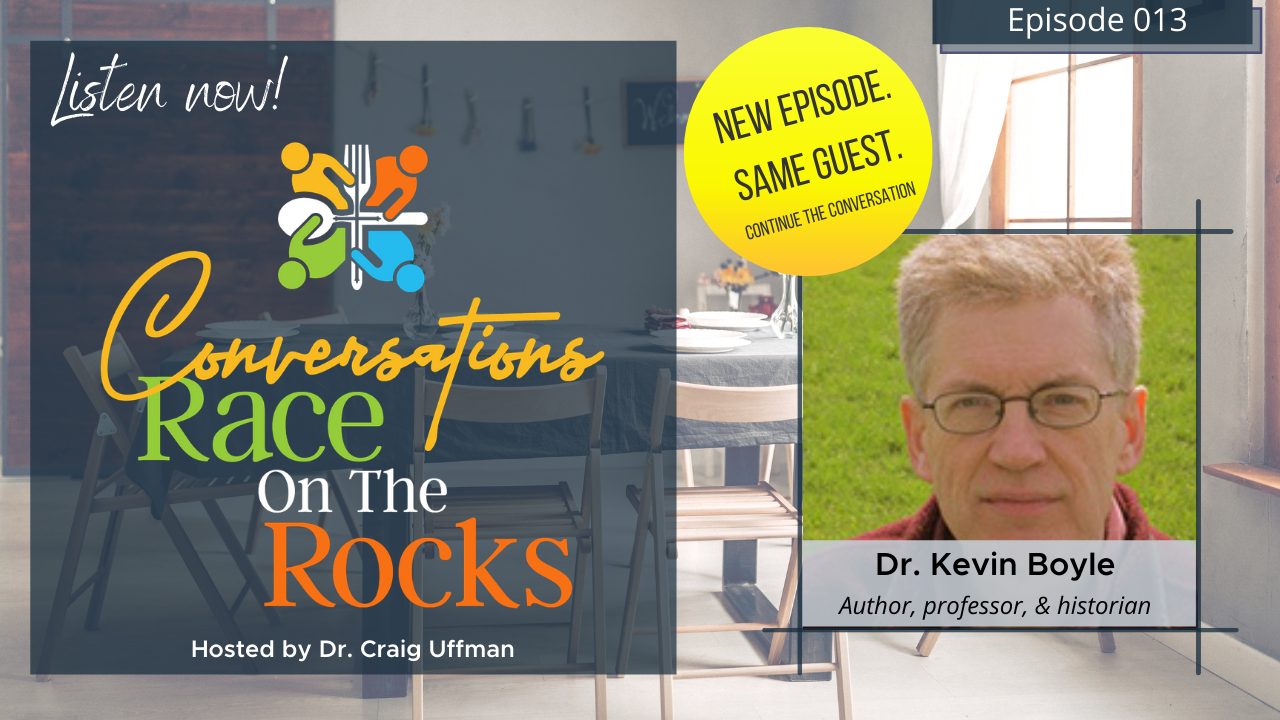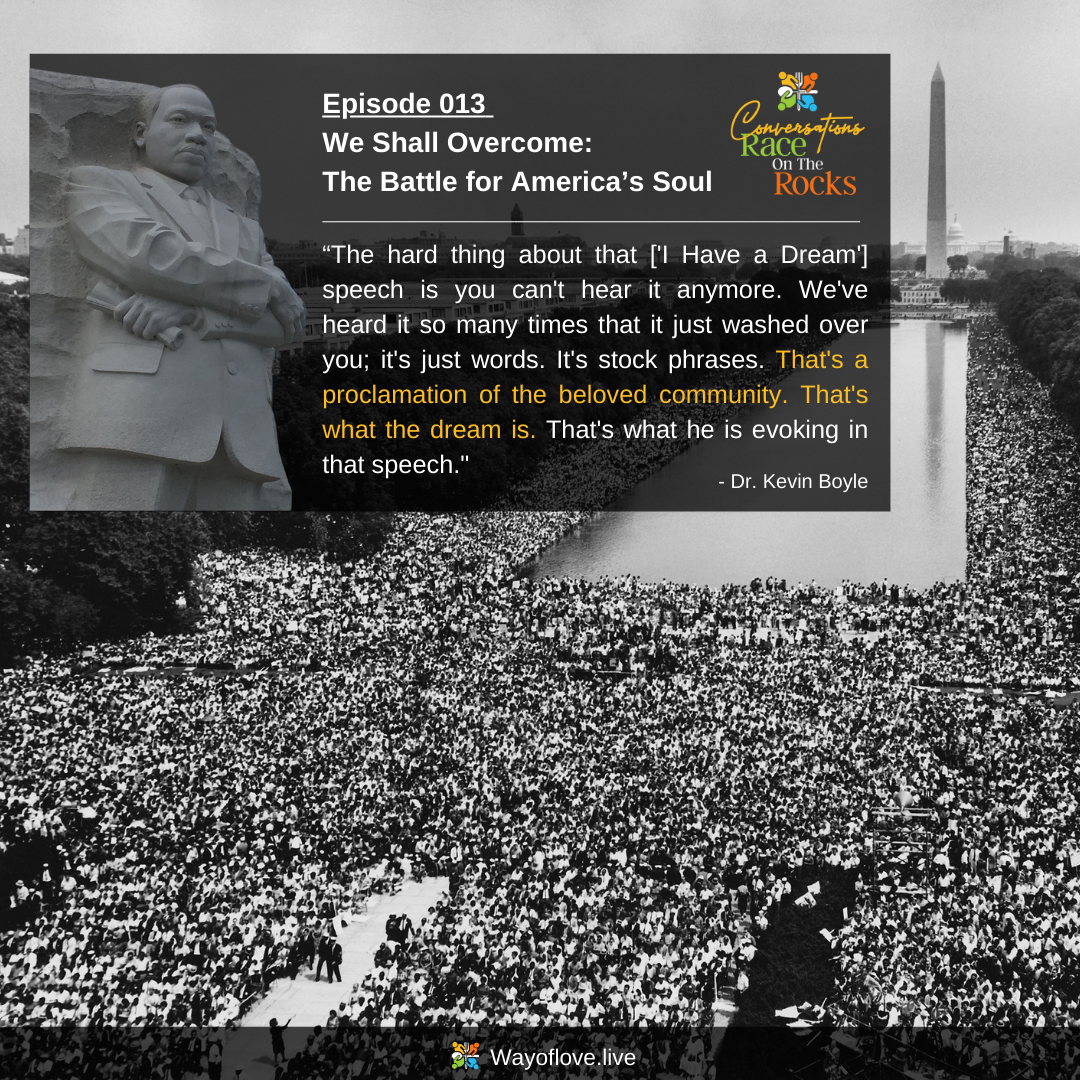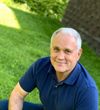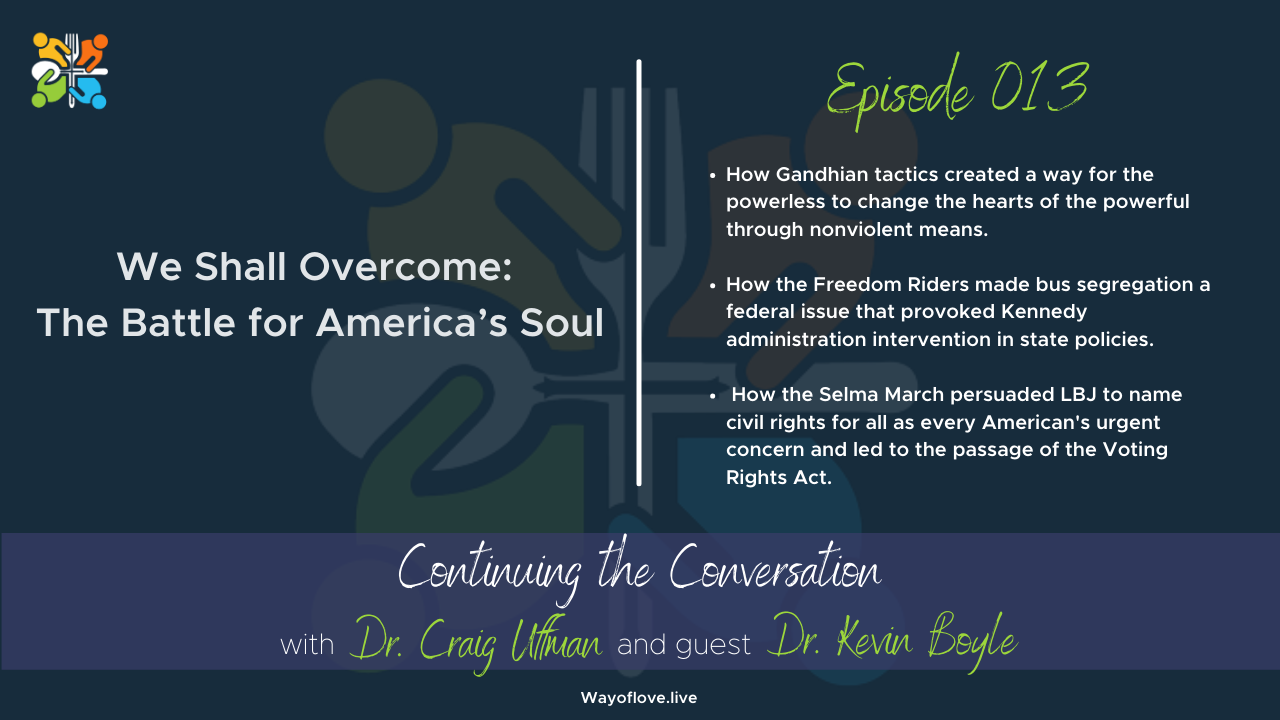"I don't think democracy works without hope. Democracy is built on a faith in each other and a faith in our possibilities. Even in very dark times, I think what we risk by abandoning hope is we risk the very experiment of democracy. We can never give in to the cynicism that says that this doesn't matter." - Dr. Kevin Boyle
Listen now on Spotify, Apple Podcasts, Google Podcasts, Stitcher and more!

With the help of our guest, Dr. Kevin Boyle, we have covered a lot of ground. In the last episode, we paused to synthesize all of the previous ten episodes, so that is an excellent summary to listen to if you are just joining in the conversation. That last episode also helped us set the stage for understanding the nonviolent movement of the 1950s and 60s that sought to restore the civil rights that were already guaranteed to all citizens by the 14th and 15th amendments but denied to Blacks during our Jim Crow era. Dr. Boyle helped us drill down into some details regarding the players, strategies, and objectives of both sides in the battle for equal opportunity in our public spaces.
Dr. Boyle is a professor at Northwestern University specializing in the 20th century United States history. He has a particular focus on modern American social movements, such as the Civil Rights Movement. Dr. Boyle has a long list of publications and honors including fellowships from the National Endowment for the Humanities and the Andrew Carnegie Corporation. He is the highly acclaimed author of Arc of Justice: A Saga of Race, Civil Rights, and Murder in the Jazz Age, which was a finalist for the Pulitzer Prize and received the National Book Award for Nonfiction and many others.
Today we pick up where we left off, tracing the pivotal moments of the quest for legislation that would finally provide equal rights. We end today's eye-opening conversation with grounds for hope as we move forward to pursue racial equality in America.
Questions for Clergy and Other Group Leaders
- How did we use everyday practices to enforce notions of caste?
- So how did the movement leaders take on American practices of caste?
- How did we get to the Civil Rights Act of 1964, and what was its significance?
- How did we get to the Civil Rights Act of 1964, and what was its importance?
- What are some of the characteristic techniques the moderate white eschews the language of segregation and white supremacy while obstructing the change needed?

Show Notes
- [2:50] - In the last episode, Dr. Boyle shared with us the beginnings of America's first nonviolent movement and how it sought to call us all to be our best selves and a part of one beloved community.
- [3:54] - The people involved in this first nonviolent movement of this era were courageous in their fight for equal rights, and Dr. Uffman reminds us that they were very young. John Lewis, for example, at this time was only 19 years old.
- [5:04] - The movement followed the Gandhian principles of starting small. They began at the lunch counters, stood up for justice, and then moved out into wider protests.
- [5:52] - One of the tricky things about nonviolent protests is that they result in violence. Dr. Boyle explains how this nonviolent protest resulted in White outrage and mass arrests.
- [6:17] - Gandhian tactics create bigger and bigger and bigger events that will freeze up the power structure so that the powerless can bring down the powerful through nonviolent means. Through that, you will create the beloved community described in the Bible.
- [6:55] - Dr. Martin Luther King Jr.'s "I Have a Dream" speech is evoking the beloved community, but we can't hear it anymore. We've heard it so many times.
- [7:58] - Dr. Boyle describes the Freedom Riders. They were pacifists who would defy local law on the bus and bear witness. This began with CORE, a group of radical pacifists in the 1940s.
- [8:50] - In 1961, a small group of pacifists heads off on the Freedom Rides, get down to Alabama, and are brutally attacked by Whites. CORE called it all off.
- [9:39] - SNCC in Nashville picked up the Freedom Rides again, and they were also attacked. Although they were beaten, Freedom Riders accomplished the constitutional crisis they sought.
- [10:40] - President Kennedy at that time gave them federal protection. They could force federal action through redemptive suffering.
- [11:01] - Dr. Uffman points out the distinction that this was interstate transportation. Because they were crossing state lines, President Kennedy could step in.
- [12:31] - Blacks were stripped of their right to vote through disenfranchisement laws. One of the Civil Rights Movement's ironies is that you had to take your politics into the street because of disenfranchisement, and they did, to enormous effect.
- [14:00] - After Johnson was elected in 1964, Dr. Martin Luther King, Jr.'s organization demanded voting rights. Johnson was a supporter of voting rights, but he didn't want to work on that yet. Using the same Gandhian tactics, people marched to the courthouse in Selma, Alabama, and as they were turned away, they would come back in more significant numbers.
- [15:14] - One of the protestors in Alabama was killed, and this sparked the decision to do a more dramatic demonstration: a march from Selma to Montgomery. This was a dangerous path through Alabama.
- [16:10] - Marchers set out but could not leave Selma as they were attacked by state troopers. The footage from this played on national television.
- [17:15] - Dr. Martin Luther King, Jr., who was not present at the Selma attack, traveled there and called all people of faith to join him in Selma as an act of moral witness. Nuns, priests, ministers, and rabbis flooded the town. A minister was killed, which led to more protests, and eventually, protests were started nationwide.
- [18:15] - The pressure became so great on Lyndon Johnson, he had to introduce voting rights legislation. Dr. Boyle describes this as one of the most extraordinary events of any presidency.
- [19:02] - Quoting President Johnson, Dr. Boyle explains how his speech to legislate voting rights made him one with the movement and demonstrated the beloved community.
- [20:10] - This moment was incredible, but Dr. Uffman also points out that there was backlash, and a woman was killed as a result.
- [21:01] - Another crucial piece to this story was the availability of television and watching footage of the violence and brutality.
- [22:05] - Shifting focus to the northern states, Dr. Boyle explains that there was no northern state that embraced disenfranchisement, but segregation in housing and education was enforced through violence.
- [23:27] - Brown did not apply to these northern states because segregation was not supported or enforced by law.
- [23:43] - Voting rights aside, the difference between the north and the south regarding segregation and violence was not very profound.
- [25:22] - Dr. Uffman refers to a book called Cold War Civil Rights by Mary Dudziak. He points out that our struggle to protect Blacks' rights was seen by other countries and used in propaganda campaigns.
- [26:52] - One of the ways the Civil Rights Movement was resisted was to label institutions as communist. The NAACP was attached as communist and outlawed in many states.
- [28:45] - The myth that these problems were only in the south has been deeply ingrained for a long time. The state department marginalized the race problem as only in the south to demonstrate that it was not an American problem. They claimed it to be only a regional problem with culture.
- [30:40] - When we think of Jim Crow, we tend to only think about drinking fountains and seats on a bus, but this is a way to narrow the race problem.
- [31:26] - Dr. Boyle illustrates the current race problem in his town of Chicago, comparing the reaction to segregated drinking fountains and housing.
- [32:44] - Dr. Uffman quotes the book A More Beautiful and Terrible History by Jeanne Theoharis that illustrates this myth on a more personal level. Her point is that to whitewash our past and maintain structures, we've had to create a culprit of stereotype: the redneck.
- [33:42] - Using Nixon's campaign moves to illustrate, Dr. Uffman explains racists were redefined. A racist isn't that genteel moderate politician that is signing the Southern Manifesto. The only racist is the redneck.
- [35:27] - There is a lot of argument surrounding an end date for the Civil Rights Movement. Dr. Boyle lists several ends that have been suggested.
- [36:29] - Regarding federal legislation and policies in the 1970s, Whites stepped away from progress, stating they had done enough. Dr. Boyle uses the series of court cases in the 70s to illustrate this.
- [37:01] - Dr. Boyle explains how we have moved backward in segregation, especially regarding schools, poverty, and incarceration.
- [38:44] - Dr. Boyle also shares how we are currently experiencing another Civil Rights movement because of this backward movement.
- [40:06] - "I don't think democracy works without hope. Democracy is built on a faith in each other and a faith in our possibilities. Even in very dark times, I think what we risk by abandoning hope is we risk the very experiment of democracy." - Dr. Kevin Boyle
- [40:54] - Dr. Boyle believes that Blacks are the most devout Americans in many ways because, despite our history, they continue to believe and demand that America believe. This is demonstrated in the last election.
- [42:03] - Vice President Kamala Harris as the first biracial and female vice president is another step forward and grounds for hope.
Links and Resources
Connect with Dr. Craig Uffman:
More from Dr. Kevin Boyle:

